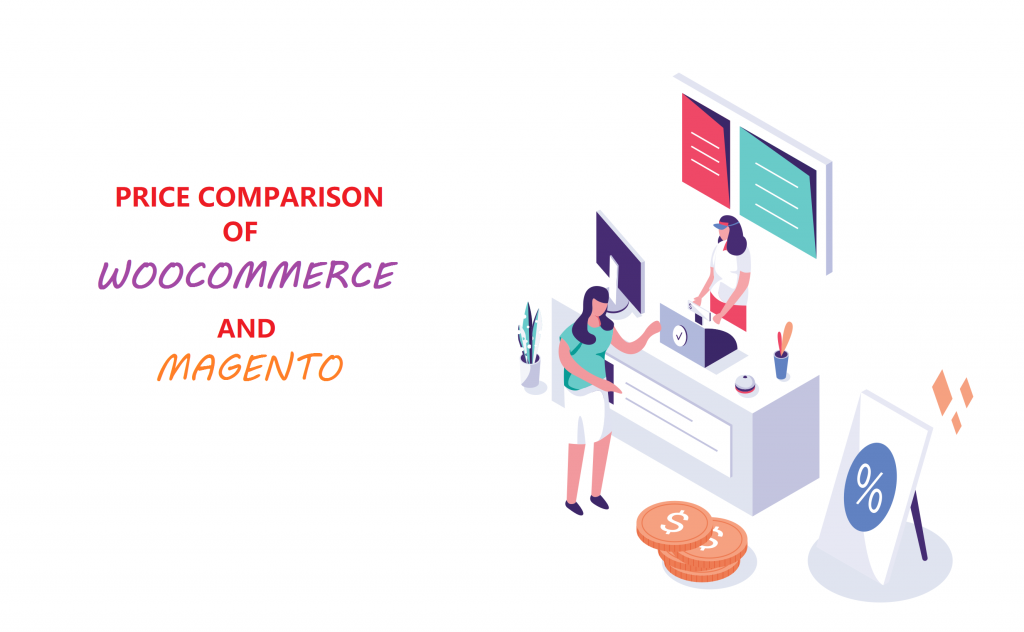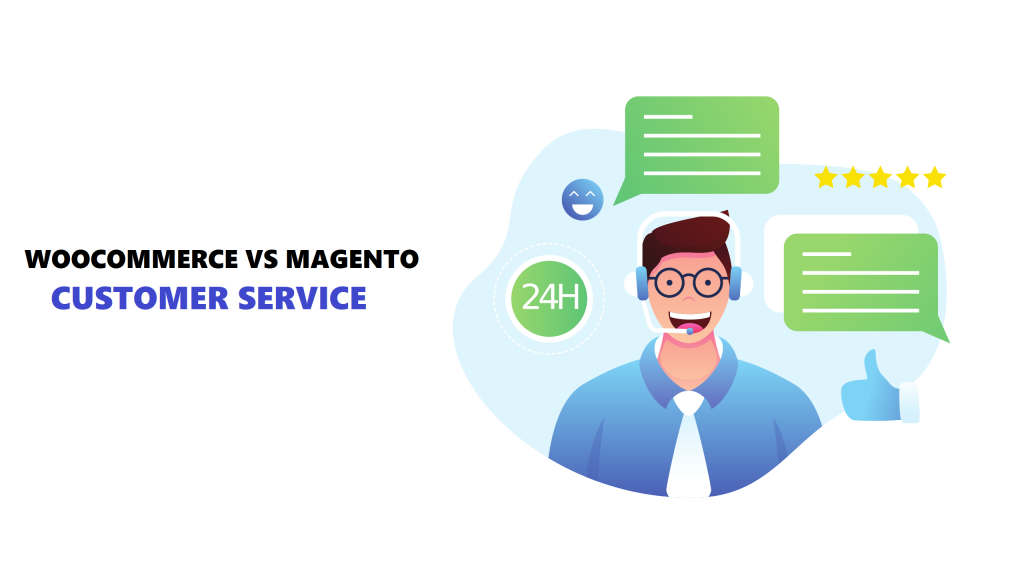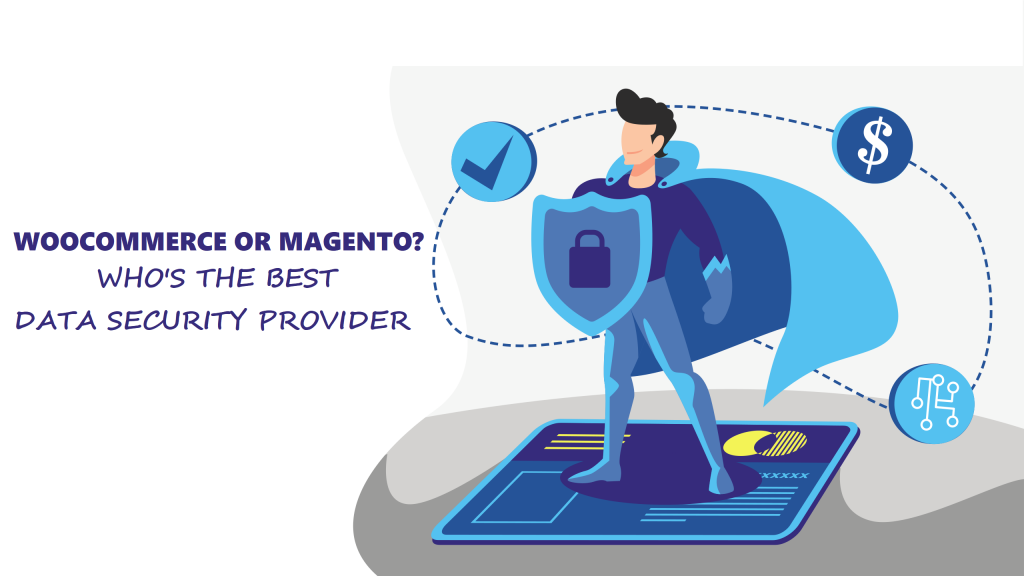The key to creating a dominant presence in the online community is by launching a captivating online store that is user-friendly and unique. You can easily do this by choosing the perfect eCommerce platform to develop your site and build it according to your style. Among the best, WooCommerce and Magento is a common name.
WooCommerce vs Magento, which is better? Both are open source eCommerce platforms that help you create an online store. They both offer customization freedom as well. Then how do you decide which one is perfect for you? Even though they both seem similar, there are many differences to be found in aspects of functionality and performance, which can help you make a decision.
WooCommerce vs Magento: What’s Different?

The major difference between WooCommerce and Magento lies in their core. WooCommerce is built as a free plugin for WordPress, which means it enjoys added functionality and ease of WordPress. This makes it an ideal choice for many eCommerce stores as it allows easy integration and customization. WooCommerce is also compatible with an unlimited number of themes, plugins, and extensions and thus provides the user with many options to choose from.
Magento is also a free eCommerce platform, although premium versions are available as well. But it is not built on WordPress core and thus WordPress integration might be required in certain conditions. It also supports customization with the help of plugins and extensions, although not all of them are free and some are restricted to premium versions only. It is also a self-hosted platform but offers managed hosting in premium versions.
The difference between WooCommerce and Magento might seem negligible but once tested on different criteria, you can easily recognize their strengths and weaknesses.
Check out official websites for more information:
1. WooCommerce
2. Magento
Let’s Check The Features: WooCommerce vs Magento
Both WooCommerce and Magento, offer a variety of features that set them apart from each other.
WooCommerce Key Features
- Free eCommerce platform plugin for WordPress.
- Self-hosted eCommerce platform.
- Enjoys unlimited plugins and extensions to add functionality in online stores.
- Compatible with third-party themes and plugins.
- Freedom of customization.
- You can customize the look, theme, payment methods, and added eCommerce features of your website.
- Provides basic security features.
- Easy to integrate with existing plugins.
- Relatively cheaper than other eCommerce platforms.
Magento Key Features
- Free self-hosted eCommerce platform.
- Offers managed hosting in premium versions.
- Equipped with many built-in features to avoid plugins.
- Supports third-party extensions and plugins as well.
- Provides advanced security features.
- Built-in checkout.
- Consists of many payment and shipping tools.
- Intuitive admin panel.
- Powerful APIs help in third-party plugins integration.
You might want to check the Best WooCommerce Plugins For Your Website.
Pros And Cons
WooCommerce
Pros
- Built on a strong WordPress core.
- Easy integrations of plugins and extensions.
- Customizable store.
- Supports plugins for numerous features such as social proof, layout design, chat support, etc.
- Lower cost, including additional paid plugins.
- Manages small to large businesses easily.
- Compatible with many themes.
Cons
- Steep learning curve.
- Need to have prior working experience with WordPress as well.
- Need to buy hosting, domain, security, etc.
Magento
Pros
- Consists of different versions such as free, premium, enterprise, cloud, etc.
- Supports unlimited plugins and extensions.
- API to integrate third-party products.
- Excellent order and product management.
- Consists of its own theme and layout system.
- Advanced payment and shipping methods are available.
- Generic and managed hosting are available.
- Developer friendly.
Cons
- Steep learning curve.
- Advanced features are available in premium versions.
- Increases overall cost.
- Installation and setup are not beginner-friendly.
- Integration is difficult and requires a WordPress installation.
- Difficult to manage and maintain.
WooCommerce And Magento: Comparing The Reputed E-Commerce Platforms
Comparison between WooCommerce and Magento is a popular never-ending debate but we are here to give the final verdict. We will compare both the eCommerce platforms in different aspects and see which one is the best.
1. Pricing

Pricing is a big concern if you have a large business. Both WooCommerce and Magento are open source eCommerce platforms and thus are available for free download. WooCommerce is a self-hosted platform equipped with free themes and plugins which can help you get started with a basic online store. You can also find advanced plugins and extensions to increase functionality on your website and customize it however you want, but they are not available for free.
Magento also has a basic theme, layout, and plugins available to get you started in no time. It also offers a premium enterprise version, which is quite expensive but includes managed hosting, security, plugins, extensions, and much more.
Although both of them are available for free, WooCommerce is the winner here as it has more options for budget-friendly plugins and extensions and is compatible with WordPress that allows easy integration.
2. Performance
Good performance and speed help in retaining customers. If your site loads slowly and is poor in performance, customers will most likely leave without making a purchase.
Both WooCommerce and Magento are excellent in speed and performance. They are a reliable and robust eCommerce platform. The performance is dependent on the hosting providers, the additional plugins, and the number of products per page. Too many plugins and extensions can affect the quality of speed and performance of your website, thus this criterion depends entirely on how you manage your online store.
3. Customer Service

WooCommerce vs Magento, which is better in customer service? Customer service is the crux of any good platform. If your users are not able to reach out to you in case of troubleshooting or error, this could reflect badly on your service and lose potential customers.
WooCommerce is a well-renowned eCommerce platform for WordPress. It has many community forums, guides, and blogs available where users can ask questions regarding installation, setup, troubleshooting, and error. You can also find WooCommerce experts by your hosting providers. Although, a direct chat or call option is not supported by WooCommerce.
Magento is also a popular CMS platform. You can find detailed blogs, guides, and community forums to put forward your queries. They also provide live chat and call options on their website to help you with technical issues.
Overall, both platforms offer excellent customer support, experts, and community forums.
4. Payment Option and Fees
An online store that has multiple payment options is preferrable and appreciated by customers. You can attract a wider range of customers by enabling multiple payment methods.
WooCommerce offers multiple payment options such as PayPal, Stripe, Amazon Pay, Google Pay, Apple Pay, Square, etc. It supports cash, all major credit and debit cards, and bank transfer. You can also use its built-in payment gateway, WooCommerce Payments. WooCommerce does not charge any fee per transaction when using third-party payment gateways.
Consequently, Magento also offers a variety of payment options such as PayPal, Authorize.net, Money Order, Purchase Order, Cash on Delivery, Bank transfer, etc. It also supports third-party payment gateway plugins like Stripe and Skrill. You can also set the shipping charges.
WooCommerce vs Magento in payment methods? Both win with their extensive options that adds versatility to the business website.
5. Ease of Use
WooCommerce is a plugin for WordPress and thus requires WordPress installation as well to work. You can easily find WooCommerce in the WordPress directory. WooCommerce is equipped with a wizard setup that makes installation easy and convenient.
WooCommerce also offers numerous resources to its users and provides detailed installation documents so you can set up your website with minimal effort.
Magento is a little difficult to install and set up. It is a developer-friendly eCommerce platform and thus is hard to understand by beginners. It has a steep learning curve and requires prior knowledge about coding before you can host it successfully.
Which is better, Magento or WooCommerce? Here WooCommerce takes the lead with its beginner-friendly installation, numerous resources, and accessibility.
6. Security

When you are running an online store, you have to handle confidential information of customers such as personal and payment info. A fully secure site will gain the confidence of your customers as well and improve the credibility of your store.
WooCommerce offers many security measures in the form of plugins and extensions. You can access SSL certificates, get PCI compliance, 2-factor authentication, and much more to make your site secure.
Magento also offers security through various plugins. It also offers Security Patches that is a scanning tool and can update malware patches, monitor your site, and detect unauthorized access. Its premium version includes protection against brute force attacks, login log, etc.
Here, Magento wins by a little margin due to its advanced security features.
Need guidance about the online store’s security? Check out Complete WooCommerce Security Analysis.
7. Product Management
WooCommerce allows a simple and smart way to manage your products on your website. You can further customize the product display by using various plugins, extensions, and add-ons.
On the other hand, Magento has many product management features built-in, so there is no need to download plugins. You can add wishlists, set up advanced pricing rules, group items, and add options for review products as well. Again, setting up these features might prove difficult for a beginner.
WooCommerce and Magento both offer many product add-ons that you can use to customize and display the products according to your preference.
8. Design and Themes
Your storefront needs to be eye-catching to attract customers. The design and theme you choose should be simple, unique, perfectly displays your products, and easy to navigate.
Both WooCommerce and Magento support a wide range of themes. WooCommerce is compatible with hundreds of themes, either paid or free, available in the WordPress directory. You can also download themes and designs from third-party sources such as Themeforest, to customize your business website.
Magento is compatible with numerous premade themes and designs available on Magento Themes and Magento market. You can find themes suitable for selling any product. It also supports third-party themes.
9. Extensions

WooCommerce supports more than 50,000+ extensions and plugins. These extensions range from product management, shipping methods, security to image optimization. You can easily find them on the WooCommerce directory or from third-party websites. Similarly, Magento also offers a wide range of extensions, paid and free both, from the Magento Market and third-party sources.
WooCommerce vs Magento, which is better in extensions? The answer is both but bear in mind that you need a developer for setting up extensions on Magento.
10. SEO
WooCommerce is compatible with numerous SEO tools to optimize your site and rank higher on Google search engines. The most popular SEO tool for WooCommerce is Yoast SEO, which helps in keyword optimization, internal linking, content insights, and much more. Other examples include Jetpack, WP Smushit, All in One SEO pack, etc.
Magento consists of various SEO tools depending on the version you are using, Magento 1 or 2. They help in increasing speed, providing easy navigation, optimizing product feed, and adding meta description.
Both WooCommerce and Magento offer a wide range of SEO tools that can greatly benefit your business website.
Conclusion: WooCommerce vs Magento – Who’s The Winner?
The comparison between WooCommerce and Magento might be old, but the results depend on your requirements and preference. Both WooCommerce and Magento are open-source eCommerce platforms, which means they are both easy to customize, support many plugins and extensions, and are scalable.
Moving on, WooCommerce is the clear winner here. As it is built upon WordPress, it is easier to install, set up, and customize. With WooCommerce, the possibilities are endless. It is beginner-friendly, cheap, and perfect for all sizes of businesses. Whereas Magento is a tech-savvy platform and is suitable for developers. Although it is equipped with many advanced security features and offers reliable product management to handle larger businesses, it is a demanding software and requires professional help.



